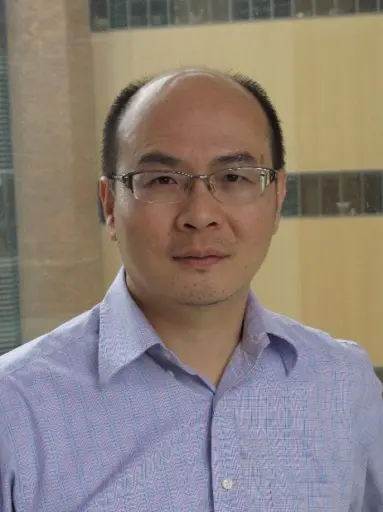Cartilage is a prevalent but precious commodity in the human body, cushioning our joints to absorb impact for protection and providing a nearly frictionless surface for smooth movement. But when it deteriorates—as those with aging knees can attest—it doesn’t regrow like other tissues.
That frustrating reality has led millions of patients to undergo total joint replacement surgeries and spurred the medical field to explore different treatments, including cartilage transplantation.
 Wan-Ju Li
Wan-Ju Li
“But these methods don’t lead to long-term satisfactory outcomes,” says Wan-Ju Li, a professor of biomedical engineering and orthopedics and rehabilitation at the University of Wisconsin-Madison.
Li is among the researchers worldwide working toward a different approach: using stem cells to regenerate hyaline cartilage, the type of connective tissue found in knee and hip joints and the nose. But producing viable, functional chondrocytes, the specialized cells that make up hyaline cartilage and also direct formation of the tissue’s extracellular matrix, has proven elusive.
In a new study published May 19, 2021, in Science Advances, Li’s lab and collaborators in the UW-Madison Department of Chemical and Biological Engineering have compared chondrocytes derived from human induced pluripotent stem cells (hiPSCs) through two of the body’s developmental cell lineages, revealing new details that could inform future cartilage regeneration strategies.
Notably, the researchers found that chondrocytes from the ectomesodermal/neural crest lineage, which naturally develop into facial cartilage, actually repaired cartilage more effectively than those from the mesodermal lineage, which generates the cartilage in the joints of our limbs.
That seemingly paradoxical result backs up work led by Dr. Ivan Martin at the University of Basel in Switzerland, in which researchers have taken chondrocytes from the nasal septum and engineered cartilage grafts for patients’ knees.
“Our study demonstrates the novel finding of stem cell-derived facial cartilage for knee repair and also provides the solid scientific evidence to explain what the Swiss group has done, including in clinical trials,” says Li, whose work centers around osteoarthritis, a common malady in which cartilage wears down around a joint. “That’s why this is so interesting. Everything seems to match together.”
 Ming-Song “Terry” Lee, PhD student in biomedical engineering and first author on the paper
Ming-Song “Terry” Lee, PhD student in biomedical engineering and first author on the paper
In their study, Li and his collaborators used hiPSCs reprogrammed from blood cells to derive genetically identical chondrocytes from the two developmental lineages. They implanted the chondrocytes in rats with joint defects and found that after 16 weeks, the ectomesodermal-lineage chondrocytes repaired more—and better—cartilage. And, in a battery of molecular analyses, those chondrocytes also displayed more biomarkers of hyaline cartilage, including greater expression of collagen type II and aggrecan. The chondrocytes also didn’t express collagen type X, a hypertrophy marker indicating cartilage turning into bone over time, a problem that has vexed many potential stem cell therapies for cartilage repair.
Li’s lab continues to explore why the ectomesodermal-lineage chondrocytes produced more hyaline cartilage. He plans to implant them in larger animal models in hopes of collecting enough data to eventually carry out a human trial.
“I really think it’s very important to understand the differences we have found,” he says, “and identify what molecular determinants govern the differences to develop effective stem cell therapies for osteoarthritis patients.”
Ming-Song Lee, a PhD student in biomedical engineering, was first author on this paper. Sean Palecek, the Milton J. and A. Maude Shoemaker Professor of chemical and biological engineering, and Eric Shusta, the Howard Curler Distinguished Professor of chemical and biological engineering, were also coauthors.
This work was supported by the National Institute of Arthritis and Musculoskeletal and Skin Diseases of the National Institutes of Health under Award Number R01 AR064803.